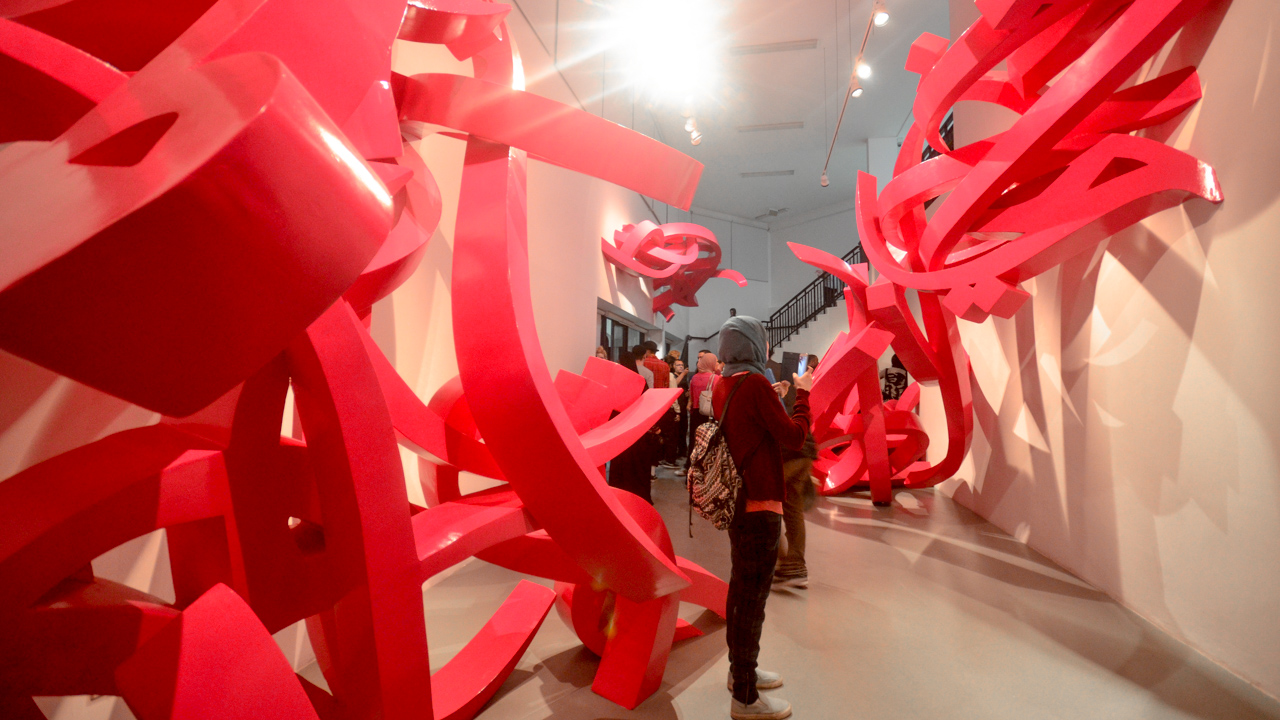“I think this is the first Skype that I’ve done at the top of a building.”
ANIMAL interrupted eL Seed, who was in the middle of painting the entire facade of a building thousands of miles from New York, on Didouche Mourad Street in Algiers. The French-based graffiti artist had recently returned from the opening of his first ever solo show in the Middle East, where he debuted an impressive set of calligraphic sculptures that update the classical art form for the modern era.

His unique work reflects his own personal quest to find his identity. Like many writers, he got his start painting his name illegally on the walls, in the ’90s. But Seed, who was born and raised in France, “didn’t feel very French.”
“People, they make you feel you’re not French,” he said, “so at some point you need you to go back to your roots and understand where you are from.” This search led him to Tunisia, where he knew some of the local dialect thanks to his family. But in Tunisia, he was again seen as an immigrant, this time because he wasn’t literate in classical Arabic. That’s when he decided to learn the script and enroll in Arabic classes. Unable to find a calligraphy teacher, however, he taught himself by reproducing traditional works. “And without even knowing it I started to develop my own style. At the same time, I brought it into my graffiti work, and thats it,” he said.
To Seed, graffiti and calligraphy are inextricably linked:
“Graffiti is like beautifying the script, the roots [of calligraphy] are the same. You know you try to beautify the script, beautify the letter, and that is the same goal in calligraphy and graffiti. I started with graffiti, you know writing my name, and now the only thing I do differently is I don’t write my name anymore, I write messages on walls. But the essence of the two arts are the same. I think graffiti in it’s essence is calligraphy.”

The observation, while insightful, is not particularly new, and Seed acknowledges that. “I’m the new generation,” he said. “There are so many who painted before me,” mentioning SHOE and Palestinian artists in the ’70s. “I didn’t create anything, even the word ‘calligraffiti’ has been used since the late 70s,” he noted. Calligraphy, after all, is as old as Arabic itself.
Still, in his show, eL Seed brings a lot that is new. He has added a dimension to the ink-based lettering by turning flat script into large pink 3D sculptures, and using quotes from a poem by the late Nizar Qabbani, he hopes to change peoples’ perspective on the classical art. “I just took my style and turned it into sculpture, but I don’t know if anyone has made it as big as I did, or used this color, pink,” he said. “I try to break the image that people have of calligraphy, you know it has to be black or silver or gold.”
For anyone who cannot see the sculptures in person, which are on display at Tashkeel until December 27, you may one day encounter Seed’s sculptures on a busy city street elsewhere in the world:
I want to bring culture to the streets just like my street art, so coming at night and dropping calligraphy [sculptures] and drilling it into the floor and making it official in the middle of paris or any big cities. Just pretending that it was commissioned by the city so nobody will touch it, and you’ll just find huge calligraphy in the middle of Paris or New York. That’s the next step.


